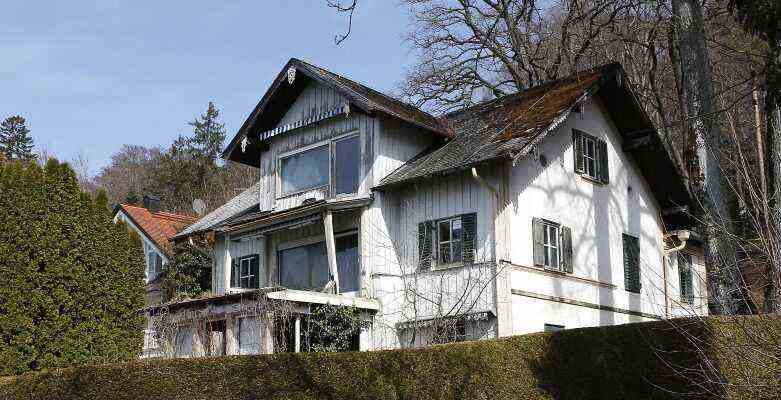The former villa of the painter Gabriel von Max on Lake Starnberg is a listed building, but is to give way to a new building. The owners have been trying to demolish it for more than 25 years.
The Max Villa on the southern lakeside road in Ammerland has seen better days. The roof is covered in moss, the facade is weathered in a dirty gray, the once lush wooden balcony balustrade has long been missing – no wonder, the house has been empty for 26 years. The ravages of time are clearly gnawing at the building, slowly, reliably and entirely in the interests of the owners. Because they would rather have a new building on the shores of Lake Starnberg instead of the listed villa with which the monkey painter Gabriel von Max fits into the ranks of respected villa owners on Lake Starnberg in 1875. After the death of his son Colombo in 1970, his niece Gabriele Stainer-Max inherits his villa. The painter’s granddaughter is committed to adding the house to the list of monuments, has the villa modernized and divided into three apartments; two of them are being sold.
At the beginning of the nineties, a business woman from Munich began to buy the apartments one by one. In 1996 she wholly owns the house. Soon after, a series of arguments started. It has not come to an end to this day, although many people, from a citizens’ initiative to the protection association for the east bank of Lake Starnberg to the International Council for the Preservation of Monuments, have campaigned for the repair and thus the rescue of the house. There were repeated discussions with the owners about renovation concepts, even Egon Johannes Greipl, at the time General Curator of the State Office for Monument Protection, joined the debates in 2010 as an advisor to the owner. Again and again it had the impression that something was going on in favor of the villa. But that always turned out to be a mistake.
The owners themselves have applied for demolition three times. So far unsuccessful
There were also some legal proceedings. Sometimes the district office fought for permission from the Bavarian Administrative Court to send a building supervisor inside the house. A fine was imposed when the family reduced the building’s monument value by removing original interior fittings. The owners themselves have applied for demolition three times. So far unsuccessful. Her most recent lawsuit against the Free State of Bavaria regarding the status of a monument was also dismissed by the Bavarian Constitutional Court on July 16, 2020. They have appealed against this.
In the opinion of the State Office for Monument Preservation, the preservation of the monument is in the interest of the general public due to the historical, artistic, socio-historical and scientific importance of the building, especially since it is one of the very rare, high-quality country house buildings of late classicism. For the status of a monument it is crucial that the villa testifies to the life and work of the artist and is an important part of the history of villa and artist culture on Lake Starnberg. The fact that Max only lived there from 1877 to 1893 – he moved to Ambach with his second wife after a divorce – is irrelevant. At least there is still a small glimmer of hope for the future of the villa. But only a very small one. Because the value of the lakeshore property has climbed tremendously over the years.

